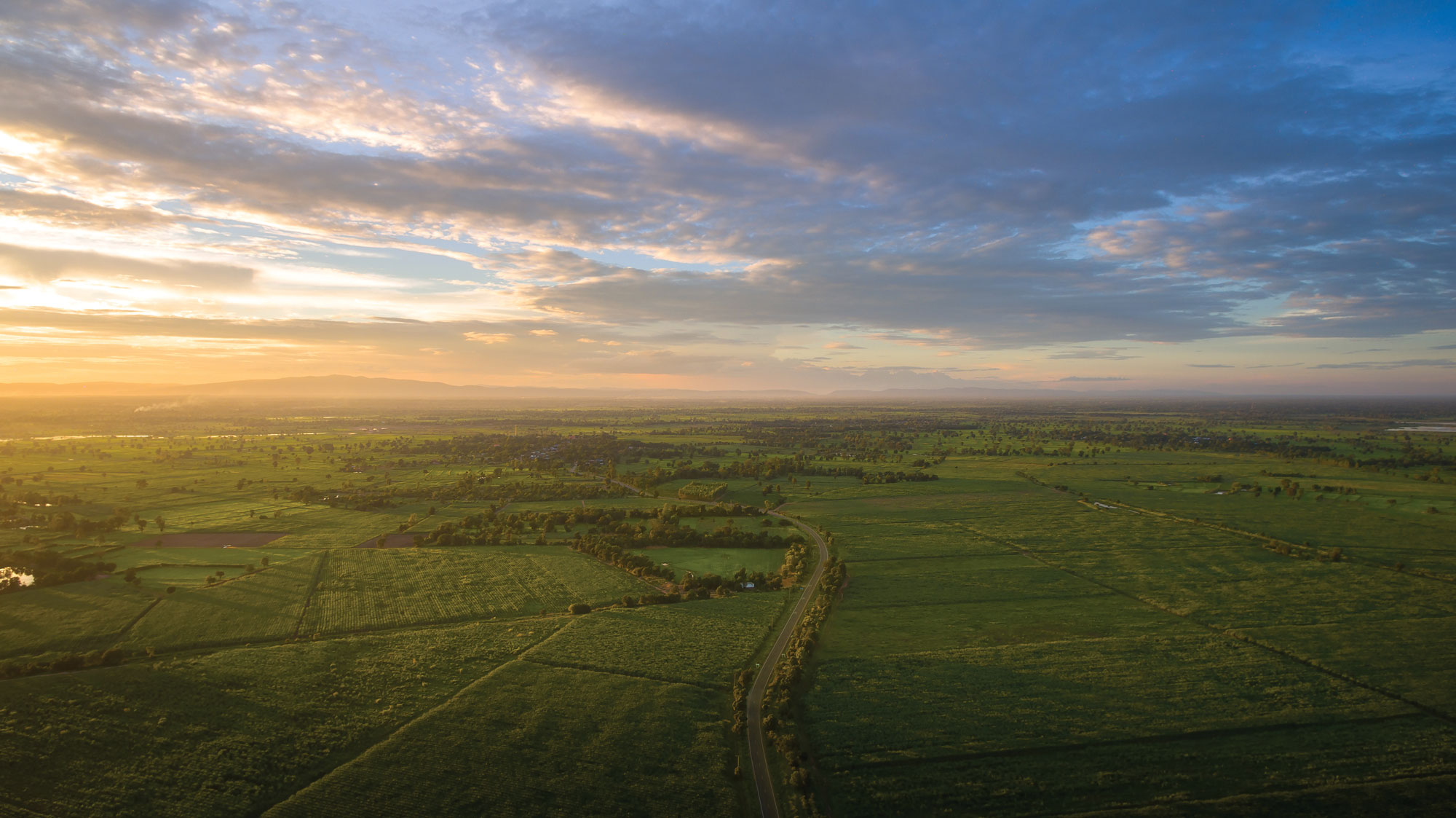
Disconnected
April 20, 2018
Written By Michelle Cummings
Lack of Access to High-Speed Internet Hampers Rural Communities
The digital divide separating rural Americans from their urban neighbors has left the far-flung communities across the country cut off from the economic, educational and social opportunities high-speed Internet provides. While recent advancements in Internet technology have transformed the ways people work, learn and connect with one another, 23.4 million people living in the nation’s rural areas have been left behind.
“Having access to broadband is simply keeping up,” said Sharon Strover, a University of Texas professor who studies rural communication. “Not having it means sinking.”
Broadband, as defined by the Federal Communications Commission, refers to high-speed Internet access with download speeds of 25 megabits per second and uploads of 3 megabits per second.
Strover has traveled throughout the country, from Kansas to Maine, talking with rural residents, and she consistently hears the same complaint: they want faster, cheaper Internet like their city-dwelling counterparts to avoid being further left out of modern society and the 21st century economy.
Broadband access has become so crucial that the federal government declared it should be treated like a utility, as vital as electricity.
“In today’s information-driven global economy, e-connectivity is not simply an amenity—it has become essential,” says Jeff Case, Missouri state director with the U.S. Department of Agriculture’s Rural Development division. “A lack of access to high-speed Internet has an effect on an area’s educational opportunities, economic development, innovation, workforce and quality of life. Lack of this service not only prevents rural Americans from participating in the global marketplace, but also limits others in more urban areas from accessing the innovations and products rural Americans produce.”
Connecting all of the various rural communities to high-speed Internet is a challenge. Many of the companies that supply broadband access say it is hard to rationalize the investment it takes to connect thinly populated rural areas. Broadband networks have tremendous up-front costs. According to industry estimates, optical fiber cable installation costs roughly $30,000 a mile.
In urban communities, a mile-long cable might pass dozens, or even hundreds, of homes and businesses. Rural Internet requires longer wires, and often special signal-boosting equipment, with fewer potential customers from whom to recoup the costs. This has left rural residents with few choices of Internet service providers, or none at all. Those who do have access typically pay higher prices for lower-quality service, despite earning less than urbanites.
Filling the Void
In the communities where large telecom providers have balked at providing broadband, private electric cooperatives have stepped up to make high-speed Internet a reality. United Electric Cooperative, based in Savannah, Mo., is one such company. Through surveys, United Electric determined its membership had extremely poor Internet service and 89 percent of members were underserved or unserved.
“People, especially young families with kids in school, aren’t going to move somewhere that doesn’t have Internet,” says James Bagley, chief executive officer of United Electric. “Rural America is an important part of this country’s culture, and we’re going to lose it if we can’t overcome the broadband issue.”
United Electric began construction on its fiber-optic infrastructure in 2010 and now has approximately 1,500 miles of fiber running along its electrical lines in the air and buried in the ground. The investment in broadband technology has allowed the electrical co-op to provide high-speed service to more than 5,000 broadband customers in the sparsely populated areas of northwest Missouri.
Lettuce Dream, a Maryville, Mo.-based business with a mission of helping individuals with disabilities, is an example of one of United Electric’s customers benefitting from broadband services.
“Internet access was vital in helping us establish our program,” says Wayne Pierson, vice president of Lettuce Dream. “Having a stable Internet connection is an essential part of our business’ success. It’s critical for us to have access to information in order to maintain communication with customers and conduct research for our business.”
Farmer’s Needs
Agriculture professionals are especially struggling with the broadband gap in rural areas. There are nearly half a million farms in MFA Oil’s operating area, and farmers and those who serve them need faster Internet to take advantage of recent technological advancements. Farmers employ a wide variety of Internet-connected devices such as smart tractors, remote crop-management devices, livestock monitoring systems and robotic milking machines.
“Connectivity is especially vital for the original ‘Made in America’ industry – agriculture – to increase farm productivity to feed the world,” says the USDA’s Case. “American farms need reliable, real-time Internet connectivity to oversee operations in the field, manage finances and respond to international market conditions. To match world food demand, innovative technologies, such as precision agriculture, can ensure American farms reach the necessary levels of productivity. This requires every part of the farm to be connected to the World Wide Web. This technological innovation and connectivity can improve crop quality, nutritional value and food safety.”
This disparity in broadband availability between urban and rural areas puts farmers in an unfortunate and potentially costly position. The lack of access to the Internet prevents them from keeping up with the latest news, weather and equipment information.
“Precision agriculture is what will allow Missouri farmers to stay competitive with not only neighboring states, but also with other countries,” says Chris Chinn, director of the Missouri Department of Agriculture. “Precision agriculture is reliant upon having access to Wi-Fi to allow farmers to complete tasks such as utilizing GPS capabilities in tractors, analyzing soil maps or even communicating with a veterinarian an hour away to see if their livestock needs immediate treatment.”
Seeking Solutions
Twenty-three percent of Missourians lack broadband coverage, and the state is ranked as the eighth least-connected in the country, a statistic that government officials have noticed.
The Missouri Department of Economic Development in partnership with the Missouri Department of Agriculture launched a plan to support rural communities by focusing on, among other initiatives, expanding broadband access in the state. The portion of the plan specified for bringing high-speed Internet to rural communities is expected to invest around $45 million over the next two years. The proposed plan seeks to ease the high cost associated with building the infrastructure necessary to create broadband connections.
Rural users are frequently relegated to accessing the Internet from their smartphones, libraries and slow home connections.
“Providing access to suitable broadband speeds would allow residents living in rural communities the ability to achieve success,” says Luke Holtschneider, Missouri Rural Development manager. “Broadband provides the opportunity to create more jobs and allow individuals to continue to live in rural areas.”
Approximately $1 million of the proposal is expected to be allocated toward mapping an estimated cost of providing broadband to all businesses and homes in Missouri. A comprehensive map detailing the areas lacking broadband access would enable the state to target the communities where building infrastructure would make the biggest impact and assist the greatest amount of customers in an unconnected area.
Part of the proposed plan also includes a Rural Broadband Matching Fund, which aims to provide grants matching private investments made toward building broadband infrastructure. Projects that could receive investments would have to match the criteria set forth by the Department of Economic Development’s Rural Broadband Office, such as the provider bringing new service that meets the FCC’s current broadband benchmarks.
“It’s going to take a partnership between private and public entities to ensure every home in Missouri gets connected to suitable broadband speeds,” Chinn says. “Communities are going to need to assess the resources they have in their areas and evaluate what has to get done to fix the issue.”
Steps are being taken nationwide to address the problem as well. In January, the FCC announced plans to launch the Connect America Fund Phase II auction, which will invest nearly $2 billion in expanding high-speed Internet access to rural communities in the next decade. Qualified providers will be eligible to receive support from auction proceeds to serve areas where it is difficult to expand or offer initial service to businesses and individual customers. With nearly 1 million homes and businesses across the U.S. located in unserved rural areas, financial support such as the Connect America Fund Phase II auction is badly needed to ensure these communities get connected.


